What is ceramic tile floor and why is it such a popular material to use around the house? We’ll walk you through its different pros and cons, the different styles you can go with and make sure that you make the right decision.
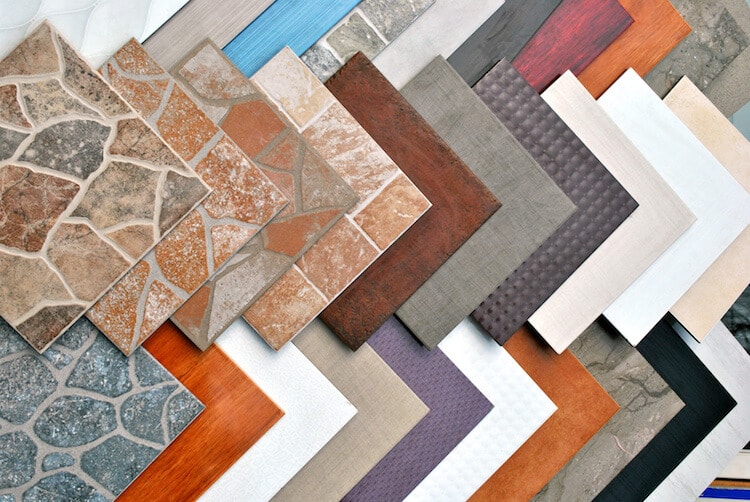
When you feel like you’re ready to move forward with your project, we’re also ready to help connect you with the most relevant ceramic tile installers near you so that they can bid on your project and make sure you get it exactly the way you want it. They will work with you to better figure out the details of your project before doing so in order to ensure they properly know the scope of the project.
What is Ceramic Tile?
With thousands of different designs available since there are many different
Places Where Ceramic Tile is Commonly Used
It’s a very versatile type of material and while often being used for floors, there are other places where it’s also being used which we have included here for your inspiration.
Bathroom Walls
Have you ever had to deal with messy walls in the bathroom? You’re not quite sure how they got to be so, but yet they’re currently looking way too messy. You will never again be thinking that cleaning your bathroom walls is a hassle. With tile keeping them looking beautiful will be a breeze. It can also help in creating some contrast to the other fixtures you have installed in there.
Make a Distinctive Shower Niche
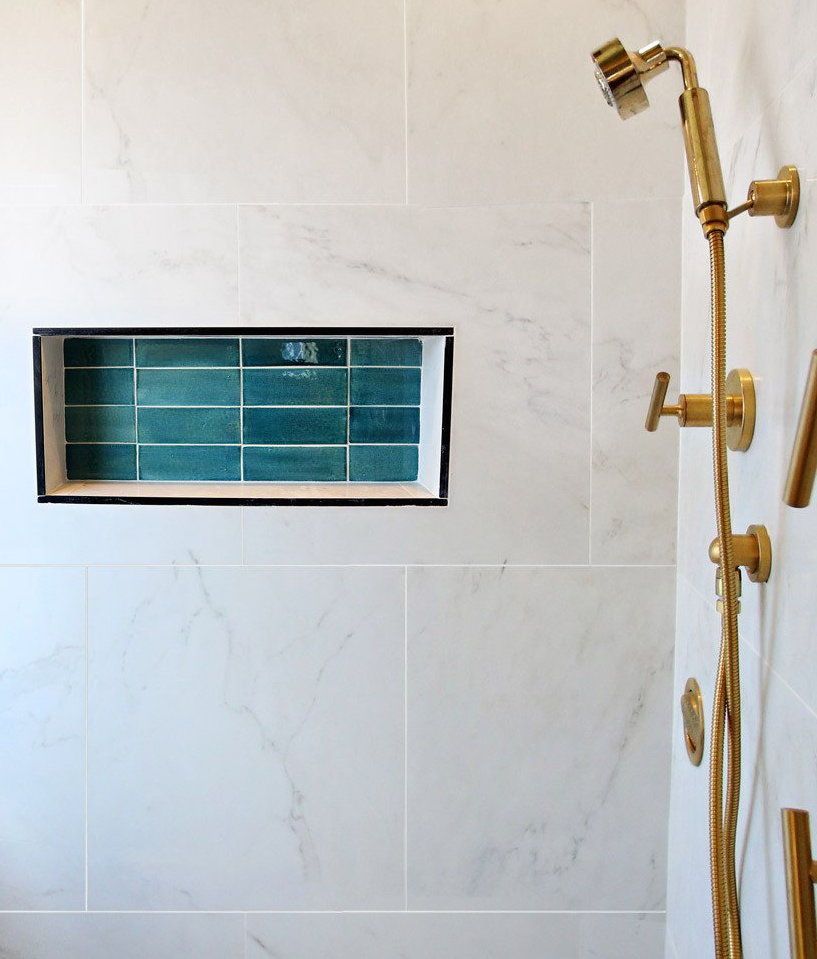
This shower niche shows a great example of how ceramic tile can be used to create some contrast. No longer do you need those awkward temporary solutions to hold the things you wish to have with you in the shower. This is the stylish way of doing it.
The Shower Walls Itself
When you’re installing a shower or having it done, there’s a bunch of design considerations you will need to do. As you can see from the picture above, it’s not just the shower niche that will look beautiful when adding selective contrast to the rest of the design, the shower itself can also look great when tile is installed in it.
You can experiment with the shower walls themselves or simply keep it to the shower niche, all depending on your personal preferences. It might even just make it slightly easier for you to get out of bed in the morning knowing there’s a beautiful shower design waiting for you.
Remodeling Your Fireplace With Tile
Your fireplace remodel no longer simply has to be a boring insert in a wall. With the help of ceramic tile, you can make your fireplace the focal point in your living room.

Photo credit: mercurymosaics.com
Add Some Contrast With the Kitchen Island
Kitchen islands are a great way to add contrast during a kitchen remodel. If you have managed to add a lot of uncontrasted white to your kitchen, an addition of something with more contrast can help your kitchen stand out.
Kitchen Backsplash
Kitchen backsplash serves the same purpose as the potential tile you might be considering installing on your bathroom walls. It not only helps in adding potential contrast and make the space more beautiful. It also helps make the space easier to clean. You don’t want your artistic abilities limited in the kitchen just because you’re afraid of making a mess. There’s a myriad of different design combinations that you can choose between.
Floors Throughout the Home
And finally… The reason why you’re here. Using ceramic tile for your floors. They can add exactly the feel that you want to your home, and they can be installed everywhere form the kitchen to the bathroom. Get ready to read more about its many advantageous features.
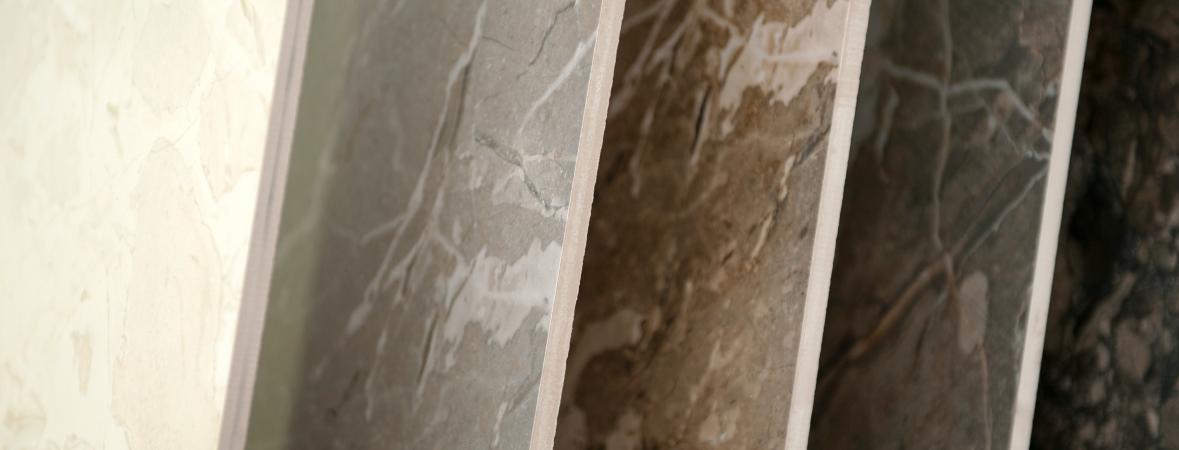
Ceramic Tile Flooring Pros and Cons
So just how come this flooring option is such a popular one when there are so many different options to choose between? Some places, such as your bathroom, require waterproof flooring options since they’re constantly exposed to high levels of moisture, while your living room may be better suited for a soft flooring option instead.
We’ll walk you through the different pros and cons of ceramic tile right here.
Pros
People choose the material for its advantages, but the advantages themselves are also what makes the material better suited for one area of your home than another.
- Glazed ceramic tiles are extremely durable – the protective layer added during the glazing will make them stain and water-resistant. The way they’re naturally created also means they’re good to use in places with high humidity such as bathrooms.
- They’re a very durable type of material – while they can crack if exposed to serious impact, as long as that doesn’t happen, you can have a type of material that ends up looking great for more than 20 years when you choose ceramic tile.
- Replacing a cracked tile is not too difficult – you may end up in a situation where a tile cracks because you dropped something heavy and sharp on it. When that happens, don’t be afraid. It’s not too difficult for a pro to come out and help replace it.
- Limited need for maintenance – did you just spill something on it? Luckily for ceramic tile flooring is that it’s extremely easy to maintain and clean. You just wipe or mop and the thing that was spilled will be gone. Sweeping or vacuuming is everything you need to do to keep it clean every day.
- Stains can usually simply be removed using heavy duty cleaners – while the material is very great at keeping stains away, it could happen that one shows up. If that’s the case, simply use a heavy duty cleaner according to the specifications of the manufacturer and you’ll have tile looking new again.
- The many design options – these tiles are printed with numerous different designs on them and there are even companies such as Tile By Design that offer custom made tiles too. Custom tiles will obviously be more expensive than ones that were mass produced, but that’s also just a way that you will be making your home stand out.
- It adds value to your home – when done strategically, you will be able to recoup most of your investment in tile, and also have the benefit of it simply looking beautiful too until you decide to sell your home. It’s not the cheapest material, since tiles usually start at $5 per square foot, although there are cheaper ones. It’s more expensive than carpet installation, but is also a completely different material with different properties to it.
- It’s great for people dealing with allergies – if you’re suffering from allergies, it’s incredibly important that you get a material that isn’t working against you. Materials such as carpets are horrible when it comes to allergies. Dust is more likely to collect inside of them, and it will be a lot harder to keep the air quality high as a consequence.
- The under-foot feeling can help reduce your energy bill – that’s great during both summer and winter!
- Bacteria and fungi prefer other surfaces – along with allergens, the risk of fungi is not as likely with ceramic tile as it is with carpet.
- Good material for high-traffi areas –
Cons
Ceramic tile also has certain disadvantages that are worth noting.
- It’s not a soft floor – while the fact that it is a hard flooring has the advantage of being easy to maintain, it’s not going to be the most comfortable material to walk on. Other floors have the advantage that you can use padded underlayments to make them softer, but that’s not an option with ceramic tile. If you have certain places in your house where you most absolutely want a softer type of flooring, tiles are simply not what you want to install there. While you can add things on top of it such as area rugs, that will also inherently change the way it looks and you’ll no longer have that unobstructed view of the beauty that the tile provides.
- Cold under-foot – if you like walking around barefoot but the temperature of the floor is a problem for you, ceramic tile may not be ideal for you either. In the winter you will feel how cold it can get and if you have cold feet in general, other options may simply be more comfortable to walk on.
- It should generally be professionally installed – the tiles are very heavy to handle and can crack if mishandled which makes it more ideal to have it professionally installed. The installation also includes grouting, mortar and different tools that the common homeowner may not have access to in their garage.
- The weight could be an issue with your current home – before the installation happens, it’s very likely that the contractor will need to check that the subflooring and floor joists are in fact able to handle the project because of how heavy the material is.
- Cracked tiles is a concern – if you drop something and it lands in an accidental way on the material, the tile may crack. If you’re clumsy and tend to drop things, this option may not be for you. Because of how hard it is, it’s also not a material that is recommended if you’re remodeling for seniors because of the inherent risk of falls. There’s simply nothing to shield the fall and the damage will be more severe as a consequence.
- It’s not kid-friendly either.
- You need to keep spare tile in case replacements are needed – if a tile cracks, you will want to keep spare ones around as it may otherwise be difficult to get tiles that look the same.

Glazed Ceramic Tile
If you thought the term “glazed” used in relation with glazed ceramic tile refers to them being glossy, you’re not alone as it’s a common misconception. Rather, it’s the coat that is applied on top of the tile. It usually consists of liquid glass or enamel. The different coatings will also have different characteristics. Some of them are more glossy, while others are more matt.
Unglazed on the other hand is when no such coating has been applied. You might not have guessed it, but the coating is in fact applied before the firing process, where the tile goes into a kiln. When it goes in there, the coating will stick as a consequence of the firing process.
The advantage to adding this coating on top is that the tile will have great water-resistance
Glazed vs Unglazed Ceramic Tile Flooring
Unlike glazed tile, unglazed one will not have the same protective layer, which means that they’ll need protection in a different way, or they’ll easily stain when liquid is dropped on top of them. That requires applying a sealant when they have been installed, and unlike a glazing, this sealing will need to be redone every so often, so it also increases the level of maintenance that you can expect.
Unglazed ceramic tile also has its uses. The fact that it hasn’t been glazed will make the material more slip-resistant, which is extremely convenient in commercial settings where heavy foot traffic is to be expected and where falls could even be a liability issue. The unglazed tiles also tend to have earth-toned appearances, which can be appealing for outdoor spaces or homes with a more Mediterranean feel to them.
For paver or decking, they can also be preferred because of the above-mentioned attributes.
Whether you should go for one option or the other depends on what it is you’re trying to achieve and what look and feel you want. If better slip-resistance is important, you might want to consider unglazed ones.
Glazed tiles have an infinite amount of design options, where unglazed ones will be more earthy. Glazed tiles are also less dense, where unglazed ones are both denser and thicker too.
What is The Difference Between Ceramic and Porcelain Tile?
Porcelain is another type of tile that homeowners typically consider for their various floors, and it’s a type that we’re often asked about also, especially in relation to traditional ceramic time – hence this section on what the difference is between the two.
In the equation, you’ll be thinking about what best suits the needs that you have. How do you get the option that is both more practical and durable between the two related to your specific needs? Porcelain has its own set of characteristics that could make it a better choice for you.
They have a lot of similarities, but they definitely also have a lot of differences worth noting.
The first one we’d like to point out is that porcelain tile is more dense and less porous when compared to ceramic tiles, and that also makes it more water-resistant. Being denser and less porous makes it more durable too, and that means that it can withstand more wear and when simply comparing durability will seem like a better fit for both indoor and outdoor environments. That’s also why it’s worth considering for places with a lot of wear, such as commercial settings. Porcelain is fired at higher temperatures which is where it gets its additional strength from.
They’re also less likely to have problems with scratching or chipping. So why is ceramic tile still so popular? Well, for one it’s significantly less expensive.
Benefits of Porcelain
Here are all the different benefits associated with porcelain:
- It’s more water-resistant because of its density.
- More stain-resistant too – when it’s been glazed it’s practically impossible to actually stain it.
- Maybe the most durable flooring option you can go with – when you’re choosing a porcelain tile that will be exposed to extreme traffic and heavy equipment, you will want to look for ones with no less than a 5 PEI rating. The higher the PEI rating, the more durable it is.
- Less frequent need for repairs since they’re so resistant to both stains and cracking – while you will still want to keep spare tile in case something happens to one, it’s significantly less likely that it will become necessary than with ceramic tile.
- With the porcelain tile, the protective finish layer goes all the way through whereas it only covers the top with ceramic tile.
Disadvantages of Porcelain
The disadvantages of porcelain is also the reason why a lot of people choose traditional ceramic tile instead.
- Installing porcelain tile flooring costs significantly more – it’s definitely not the cheapest option you can go with. In fact it’s a very expensive option and it’s not an economical one. Ceramic tile can still offer most of the same advantages as porcelain, but installing porcelain is commonly 25% more expensive and it’s not uncommon that that number climbs to 50% higher than ceramic.
- Porcelain is even heavier than ceramic tile – while ceramic tile is heavy, porcelain is heavier, and that creates certain structural challenges as well as making the installation more difficult too. It also makes it especially important to make sure that there’s enough structural support for the weight.
- The cutting process is more difficult than with ceramic tile – that will also make the installation more difficult, and it’s why it’s only recommended that you get a pro to install it for you.
Porcelain vs Ceramic Tile Flooring – The Verdict
When choosing between the two materials, it often comes down to either budget or weight being a problem.
What People Fail to Realize With Both Ceramic Tile and Porcelain – the Grout!
If you have gotten excited about the prospect of installing ceramic tile flooring, it’s still important to know that there’s a vulnerable area that you need to be aware of, and that’s the grout. How does that impact you? Well, you might have highly water-resistant material that covers the absolute largest part of the floor, but without securing the borders with grout, water will still be able to seep through.
The grout should be periodically inspected as damage to this material isn’t unlikely and when it’s time to repair the grout, that should be done diligently. Even if you make sure to remove spills, the grout is the weakest link and can be affected by moisture and humidity. Mold and mildew could start forming as a consequence, so you will still want to be careful that you make sure the grout is doing its intended job.
How to Select Tiles for Your Living Room, Bathroom or Kitchen?

There’s an abundance of different options you can choose between when it comes to finding the right solution for your kitchen, bathroom or living room which is why we’ll be spending some time focusing on the different factors that you should be considering when selecting the right option.
Is it a Problem if it’s a Hard Surface?
The Moh’s scale indicates how hard the tile is, and while it might not bother you if you don’t plan on walking or standing on it for a long time at a time, it could become more of an issue with places where you’ll be walking a lot. The Moh’s scale rating will also impact how easy it scratches.
The rating is generated with serious laboratory testing and is issued by the Porcelain Enamel Institute. Class III is a good option for normal foot traffic and can work for countertops as well, although it’s not recommended for kitchens or places with significant amounts of foot traffic, and definitely no commercial traffic.
Class V is the highest class and will be able to handle the heaviest traffic. This is also what you will want if scratch-resistance is high on your list or if it’s for commercial purposes.
How Porous is the Material?
The more porous the material it is, the more easily it will absorb whatever is spilled on top of it if it isn’t properly sealed, and this will also cause stains. You want very water-resistant materials in areas that have a lot of moisture.
There are different classifications when it comes to how porous a material is: non-vitreous, semi-vitreous, vitreous and impervious. For bathrooms, you will want material labeled as impervious.
Consider Your Budget
While we might all want to have porcelain installed, it simply may not be within your budget.
Is Slip-Resistance Very Important?
Tile isn’t traditionally very slip-resistant but with advanced production techniques and coating that can be added, it can become more slip-resistant. The presence of kids, elderly or others where slip-resistance is especially important requires that you use a flooring material that provides more protection.
Alternatively you can consider installing slate instead of ceramic tile, although you can also just install smaller tile because the additional grout will help in making them less slippery.
Is Your Concern to Create a Look That Feels Bigger?
You probably heard it before – if you want to make a space feel larger, you will want to install brighter colors. That also goes when it comes to tile. A lack of natural light might mean that installing lighter tile is especially important. The colors you will be looking at here include cream, white, sand and beige.
Go with grout that doesn’t stand out and choose larger tiles as that will also have an enlarging effect.
Double-Fired Tiles
Bicottura, when you see that word, you know that you’re dealing with durable tiles because the way they’re made is slightly different. What happens is that excess water is first removed where they’re placed in the kiln, however the first round does not include having the glazing added to them.
The glazing is only applied after they get out of the kiln for the first time. This makes sure the tiles are even more durable than if the glazing had been applied the first time around.
Ceramic Tile Sealer
There are different ceramic tile sealers available, but it’s also important that you’re aware of the reason why you might use them. What they do is that they’re a liquid coat that is added on top of a porous surface, and thereby helps protect them against a range of things including wear from walking and spills.
The Two Different Types You Need to Know About
There are two different types of sealers – penetrating and surface ones. The penetrating sealant will enter the porous areas, thereby protecting it and the look of the tile won’t be changed as a consequence of having this added to it.
The surface sealant on the other hand may change the look of the tile by creating a protective top layer.
Does Porcelain and Ceramic Tile Need to be Sealed?
The most important advice we can give you is to always follow the recommendations of the manufacturer, as they know best what will be needed for the specific type of surface you’re dealing with.
Secondly, you should know that porcelain and ceramic tile doesn’t generally need to be sealed because it has already been glazed. If it hasn’t been glazed, both ceramic and porcelain will need sealed, and it should be done before grout is installed.
If not done before grout is installed, the grout could potentially end up staining the tile, so the sealant helps ensure that doesn’t happen during the installation process. Make sure that you’re always following the recommendations of tile contractors before you seal the material.
How to Seal Porcelain and Ceramic Tile?
When you have determined that you should in fact seal your ceramic or porcelain tile, you can follow the video below to find out how to do it. The sealant you ended up purchasing will also have instructions on it on how to apply it the right way, and those should always be followed.
What Does it Cost to Install Ceramic Tile Installation in Your Home?
The cost of your ceramic tile installation will depend on a range of different things, which is why the best opportunity for you to truly understand what it will cost is to get it done is to work with a professional company and ask them for quotes. The cost below is done on the basis of a 64 square foot space, like a bathroom. The cost of a project like it will usually range from $1,200 to $1,400.
Cost Breakdown for Tile Installation
- Making sure the floor can handle the additional weight and preparing the area: An assessment of the floor and its support is needed. Repairs or replacemnent of either floor joists or plywood could be necessary. If 6 plywood sheets need to be replaced, the associated cost is on average $135.
- The cost of labor: The labor cost is usually determined as a result of the space that needs to have tile installed, and you can generally expect to pay $5-$9 per square foot. The cost per labor would therefore be $350-$630.
- The tile material: The cost of tile will be determined per square foot, and it generally starts around $5. In order to ensure that you have spare material for possible cracked tiles, purchase an additional 15%. The total material cost would therefore end up at around $700.
Factors That Increase the Cost
- Removing old flooring will usually tend to increase the cost.
- Getting custom tile or creating intricate designs created can also increase the cost of the installation.
- Unglazed tile will need to be sealed to better protect the tile, and that will increase the cost.
Vinyl Flooring that Looks Like Ceramic Tile
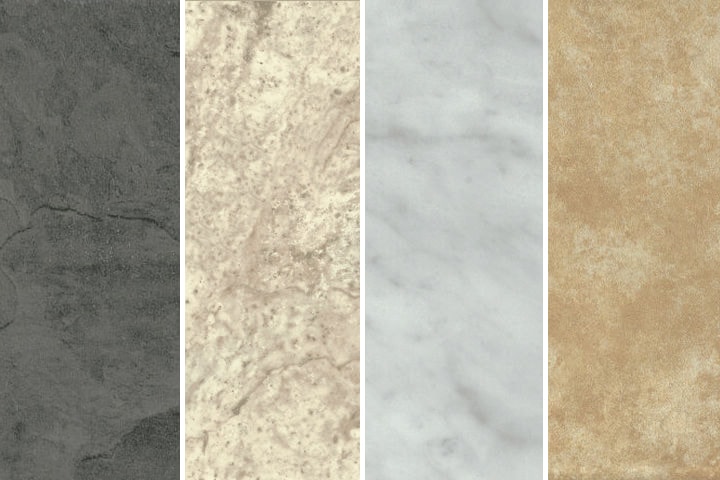
While we all may want the look of ceramic tile, there’s also the option of going for vinyl flooring that looks like it. You can get the realistic look of tile without having the disadvantage of the high cost and the cold feeling under your feet.
When you go for vinyl flooring, you also won’t be getting a material that easily cracks when something is dropped on it, which is an additional reason why a lot of homeowners have become fond of vinyl both as a flooring material, but also as a siding material.
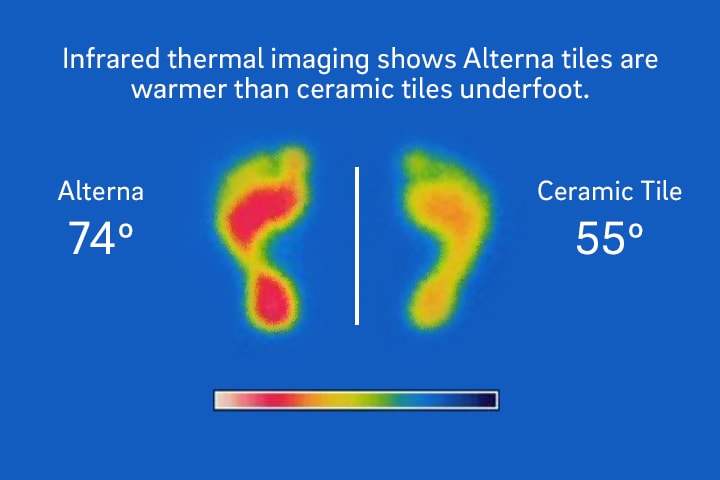
Photo credit: armstrongflooring.com
The image above shows why some people would rather install vinyl flooring instead of ceramic tile.
Ceramic Tile vs Hardwood Flooring
With the expected cost per square foot to install tile being flooring being somewhere between $8 and $10, and the equivalent cost for installing hardwood flooring being $8 per square foot, the cost to have the two materials is pretty much the same.
Mind you that those are averages and your personal choices could very well affect the cost you end up paying.
There are, however, reasons why people will choose one type of material over another. One of the benefits of choosing ceramic tile over hardwood flooring is that it has less maintenance that’s required. Wood floors will need to have Polyurethane applied to them whereas glazed tile won’t need any additional sealants.
Hardwood won’t crack the same way that ceramic tile if something is dropped on top of it. The problem with solid wood is that it won’t fare well in humid climates and should be avoided in bathrooms, although engineered wood can better stand the harsh humid climate.